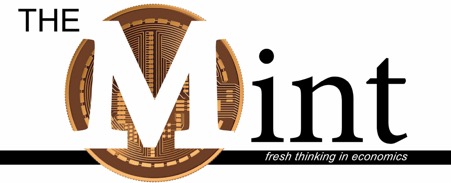David Barkin looks at the swell of ancestral community measures across the Global South to address climate change issues.
On a cool evening in Oaxaca, Mexico, the town’s plaza fills with voices. Dozens of men and women, young and old, gather in a circle, passing around a microphone that barely keeps up with the flow of testimony. The issue on the agenda is urgent: a proposed infrastructure project that could affect the community’s access to water. But the discussion ranges widely, from farming practices to school programmes to cultural events. Every voice is heard, and the final decision will be a collective one.
Developments like these — an asamblea comunitaria, a cry for autonomy, an uprising to reclaim community lands — are hardly new. For generations, Indigenous communities across the region have governed themselves through direct democracy and collective labour. What is new is how these events, once regarded as relics of the past, are now being held up as models for the future to eliminate poverty and contribute to the fight against climate change.
Beyond technical fixes
At international summits, leaders argue over carbon reduction targets and draft agreements heavy with technical language. Many of these treaties gather dust as emissions continue to rise. In contrast, in the Global South, a quieter but more deeply rooted response is taking shape.
Many communities are reviving ancestral systems that balance human needs with nature’s rhythms.
Rather than calling for individual sacrifice or relying on top-down state policy, many communities are reviving ancestral systems that balance human needs with nature’s rhythms. In the Andes, the Quechua phrase Sumak Kawsay — “Living Well”— frames life not as endless growth but as harmony. In Chiapas, Mayan groups refer to Lejil Kulejal, while in India, Gandhi’s notion of Swaraj — self-rule — continues to inspire grassroots movements. Across southern Africa, the philosophy of Ubuntu reminds people that personal well-being is inseparable from the community’s [see box: Alternative cosmologies].
In Oaxaca, the idea of Comunalidad crystallises this worldview: society as a collective project. That means no one is left out. Farmers contribute by cultivating maize and beans. Children learn to join tequio—community workdays—by sweeping plazas or planting trees. Elders bring wisdom to the assembly. Women, who once had limited roles, are increasingly shaping debates, pushing education, healthcare, and cultural preservation onto the agenda.
These events have become increasingly common since the (neo) Zapatista uprising of 1994 in Chiapas, where indigenous communities shouted “enough” and declared that “other worlds are possible”. With over thirty years of experience, rooted in a deep well of traditional knowledge and decision-making systems, this movement now covers an area larger than the Netherlands, with perhaps half a million people participating. Their experience in self-governance is bringing tangible improvements to the quality of life, including education, healthcare, and environmental care, despite ongoing conflicts with local and national political forces. [see box: Uprising ]
Their experience in self-governance is bringing tangible improvements to the quality of life, including education, healthcare, and environmental care.
In another region, a small group of women in a community in Michoacán rose to confront organised crime’s clear-cutting of the forests in their commons. Their neighbours quickly mobilised to join them, and fifteen years later, they not only replaced the political parties and local police with a system of self-governance based on deliberations around neighbourhood fires ratified by a rotating group of authorities, but they were also reclaiming their cultural traditions and language. Dozens of other communities soon followed this example, banding together to obtain the fiscal support given to other localities; bilingual education and collective ceremonies are strengthening community bonds, contributing to improvements in both the quality of life and the environment (see box: Indigenous forces).
Unequal battles
The international community has begun to take notice. The International Labour Organisation’s Convention 169, ratified in 1991, was the first binding treaty to recognise Indigenous rights. The United Nations has since followed with declarations on Indigenous peoples in 2007 and on peasants and rural workers in 2018. (see box: Breaking free)
Yet, for many, paper recognition has not led to protection. In southern Colombia, Indigenous guards patrol forests threatened by illegal loggers. In Kenya, Maasai communities organise to prevent land grabs for luxury tourism projects. In northern India, villagers chain themselves to trees to stop logging concessions. The message remains clear: development that destroys nature is no development at all.
The core idea is simple: solutions come not from ministries or markets, but from communities themselves, grounded in collective responsibility.
To strengthen their hand, communities are linking across borders. La Vía Campesina, a peasant farmers’ movement born in 1993, now counts more than 220 million members in 80 countries. In Nicaragua, its affiliates run agroecology schools where farmers exchange knowledge on seed saving and pest management without the use of chemicals. In Mozambique, members are experimenting with drought-resistant crops that draw on traditional seed varieties.
Another alliance, Territories of Life, brings together hundreds of Indigenous and local communities that protect vast stretches of land and sea, covering more than a quarter of the Earth’s surface. These territories often overlap with biodiversity hotspots that scientists warn are critical to slowing global warming.
Scholars describe these efforts as “Radical Ecological Economics” or “Ecological Economics from Below.” It’s a mouthful, but the core idea is simple: solutions come not from ministries or markets, but from communities themselves, grounded in collective responsibility.
A broader lesson
As floods, droughts, and heatwaves intensify, the lessons from these communities resonate far beyond their borders. The climate crisis is not just about cutting emissions; it is about rethinking how societies organise themselves.
Back in Oaxaca, as the assembly winds down, a consensus emerges: the water project will be rejected. The community agrees to invest instead in strengthening its own irrigation channels, using both ancestral knowledge and modern engineering. The decision is collective, the responsibility shared.
It is a small scene in one corner of the world. But when multiplied by thousands of gatherings, marches, cooperatives, and people across the Global South, it signals an alternative future — one where confronting the global market and the climate crisis involves rediscovering the strength of community itself. These are the many post-capitalist societies actively engaged in constructing the new world humanity and the planet so desperately need.


